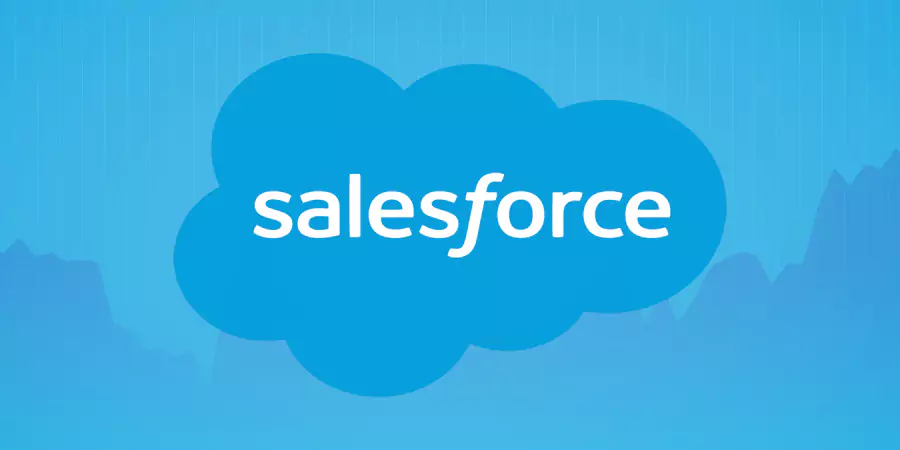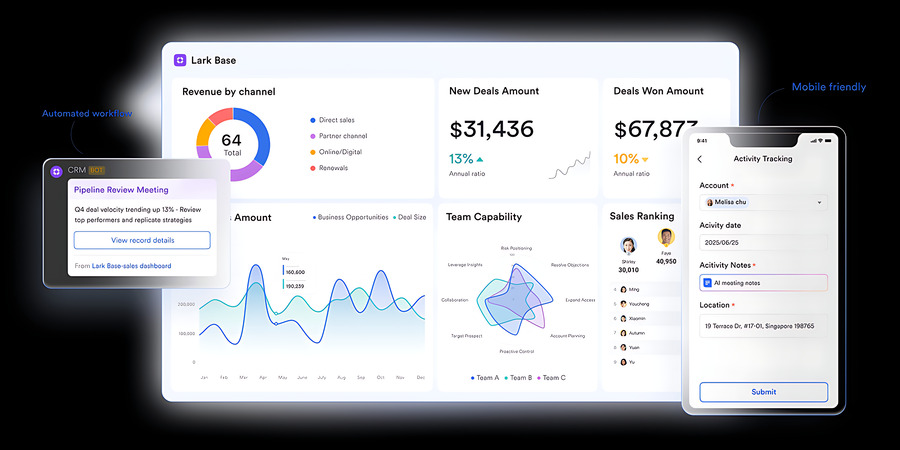Introduction
The convergence of artificial intelligence and cryptocurrency has reached a critical inflection point in 2025. The total market capitalization of AI-focused crypto tokens has surged to between $24 billion and $27 billion by mid-2025, making this one of the fastest-growing sub-markets in crypto. Even more striking, in the first half of 2025, the total market capitalization of AI-related tokens jumped by more than ten billion dollars in a single week, with major projects like Bittensor (TAO), Fetch.ai (FET), and Render (RNDR) seeing their token values double in a matter of days.
AI-crypto integration represents the marriage of blockchain technology with artificial intelligence, creating autonomous economic systems where AI agents can interact, transact, and provide services without human intervention. This revolutionary fusion is transforming how we conceptualize digital finance, creating new paradigms for data monetization, computational resource allocation, and decentralized artificial intelligence services.
In this comprehensive analysis, you’ll discover how AI-crypto integration tokens are reshaping the digital economy, which projects are leading this transformation, and why industry experts believe this convergence could unlock trillions of dollars in economic value over the next decade. We’ll explore the top-performing AI tokens, analyze their real-world applications, and provide actionable investment strategies for navigating this rapidly evolving landscape.
What is AI-Crypto Integration and Tokens and Why is it Trending?
AI-crypto integration combines artificial intelligence capabilities with blockchain technology to create decentralized networks where AI agents can operate autonomously within crypto economic systems. These tokens power platforms where autonomous AI agents software entities that can learn, make decisions, and act with minimal human input interact within decentralized networks, serving as the economic incentives and trust infrastructure for AI-driven applications.
The concept encompasses several key components:
Autonomous AI Agents: Self-executing programs that can perform tasks, make decisions, and interact with blockchain networks without human intervention. These agents can trade, provide services, and optimize operations based on real-time data analysis.
Decentralized AI Infrastructure: Blockchain networks that provide computational resources, data storage, and processing power for AI applications, often incentivizing participation through token rewards.
AI-Powered DeFi: Smart contracts enhanced with machine learning algorithms that can adapt, optimize, and provide more sophisticated financial services than traditional static protocols.
Data Monetization Networks: Platforms where users can tokenize and monetize their data contributions to AI model training, creating new economic models for data ownership and compensation.
The trend is accelerating due to several converging factors:
Technological Maturity: Both AI and blockchain technologies have reached sufficient maturity to enable meaningful integration. Advanced language models, computer vision systems, and predictive algorithms can now operate efficiently within decentralized environments.
Regulatory Clarity: Increasing regulatory acceptance of both AI applications and cryptocurrency tokens has reduced uncertainty, encouraging institutional investment and development in this space.
Economic Incentives: Blockchain and AI are converging to create smarter, more adaptive crypto networks, with AI-first tokens applying machine learning to streamline workflows, analyze complex data, and reinforce security. This segment has moved beyond proofs of concept into practical applications generating real economic value.
Community and Social Media Momentum: The AI-crypto narrative has gained significant traction across social platforms. Reddit communities like r/CryptoMoonShots and r/ArtificialIntelligence regularly feature discussions about AI token opportunities, while X (Twitter) has become a hub for AI crypto project announcements and technical developments. The #AIcrypto hashtag has generated millions of engagements, reflecting growing mainstream interest in this convergence.
Market Impact of AI-Crypto Integration and Tokens
The market impact of AI-crypto integration extends far beyond simple price appreciation, fundamentally altering how blockchain networks operate and creating entirely new economic categories.
Current Market Performance: The top 3 AI cryptocurrencies by market cap in 2025 are Bittensor (TAO), NEAR, and Internet Computer Protocol (ICP), with projects like Bittensor, FET, Internet Computer, and Render designed specifically for AI use, supporting everything from training models to running AI apps on-chain.
The performance metrics are impressive:
- Bittensor (TAO): Leading the AI crypto space with a focus on decentralized machine learning networks
- ai (FET): Enabling autonomous economic agents and smart city applications
- Render (RNDR): Providing distributed GPU computing power for AI and graphics rendering
- SingularityNET (AGIX): Creating a decentralized marketplace for AI services
Partnership Ecosystem Growth: The Artificial Superintelligence Alliance (ASI), formed by the merger of Fetch.ai, SingularityNET, and Ocean Protocol, represents a bold attempt to combine real-world utility with robust technical foundations, positioning them as high-growth opportunities in the AI + crypto landscape.
Expert Industry Predictions: Leading analysts predict that AI-crypto integration will create new market categories worth hundreds of billions of dollars. The convergence is expected to enable:
- Autonomous trading algorithms that optimize DeFi yields in real-time
- AI-powered prediction markets with unprecedented accuracy
- Decentralized data marketplaces where individuals can monetize personal information
- Smart contracts that adapt and evolve based on changing market conditions
Challenges and Risk Factors:
Technical Complexity: Integrating AI with blockchain creates significant technical challenges, including computational overhead, latency issues, and the need for specialized infrastructure.
Regulatory Uncertainty: While regulatory clarity is improving, the dual nature of AI-crypto projects creates complex compliance requirements across both AI governance and cryptocurrency regulations.
Market Volatility: AI crypto tokens often experience extreme volatility due to speculative trading and the experimental nature of many projects.
Scalability Concerns: Many AI-crypto networks face scalability limitations when processing complex AI computations on-chain, potentially limiting practical applications.
Despite these challenges, the overall market sentiment remains bullish, with institutional investors increasingly recognizing the long-term potential of AI-crypto integration.
Competitor Coverage
Major cryptocurrency publications have approached AI-crypto integration from different angles, creating opportunities for differentiated content and unique value propositions.
CoinTelegraph’s Approach: CoinTelegraph focuses heavily on breaking news around AI crypto token launches, partnership announcements, and technical developments. Their coverage tends to be news-driven, providing timely updates on market movements and project milestones. However, their analysis often lacks deep technical explanations of how AI-crypto integration actually works and what makes projects viable long-term.
CoinDesk’s Coverage: CoinDesk emphasizes the institutional and regulatory aspects of AI-crypto integration, frequently covering how traditional financial institutions are approaching AI tokens and the regulatory implications of autonomous AI agents operating within crypto networks. Their strength lies in policy analysis and institutional perspectives, but they provide limited practical guidance for retail investors or developers.
Decrypt’s Strategy: Decrypt takes a more accessible approach, focusing on explaining AI-crypto concepts in beginner-friendly language while highlighting the cultural and societal implications of autonomous AI economies. They excel at storytelling and making complex topics understandable, but sometimes sacrifice technical depth for readability.
Content Gaps and Opportunities:
Technical Deep-Dives: Limited comprehensive technical analysis exists explaining how different AI-crypto integration architectures work, their trade-offs, and implementation challenges.
Practical Developer Guides: Minimal content addresses how developers can actually build applications using AI-crypto infrastructure, including code examples, best practices, and common pitfalls.
Investment Framework Analysis: While many articles list “top AI crypto projects,” few provide sophisticated analytical frameworks for evaluating AI token investments, including metrics for assessing technical viability, market potential, and team execution capability.
Use Case Deep-Dives: Insufficient coverage exists on specific real-world applications of AI-crypto integration, including detailed case studies of successful implementations and their economic impact.
Regulatory Compliance Guidance: Limited practical guidance on how projects can navigate the complex regulatory landscape surrounding AI-crypto integration.
Value Creation Opportunities: The content landscape presents opportunities to create differentiated value through:
- Technical tutorials and implementation guides for developers
- Sophisticated analytical frameworks for evaluating AI crypto investments
- Regular market analysis comparing AI token performance and fundamentals
- Case study development showcasing successful AI-crypto implementations
- Regulatory update analysis specifically focused on AI-crypto intersection
Opportunities for Investors and Businesses
The AI-crypto integration space presents distinct opportunities across different time horizons and risk profiles, each requiring specific strategies and considerations.
Short-Term Investment Benefits:
Market Momentum Capture: The explosive growth in AI crypto market capitalization creates opportunities for traders to capitalize on momentum and volatility. Projects like FET, VIRTUAL, and AGIX have shown significant growth, driven by advancements in AI technology and increasing adoption in practical applications.
Partnership Play Opportunities: Strategic partnerships between AI companies and crypto projects often create immediate price catalysts. Investors can benefit from monitoring partnership announcements and positioning accordingly.
Technical Milestone Trading: AI crypto projects often experience price movements around technical milestones like mainnet launches, major algorithm updates, or AI model deployments.
Long-Term Strategic Advantages:
Infrastructure Investment: Early investors in AI-crypto infrastructure projects may benefit from network effects as more applications build on these platforms. Projects providing fundamental services like decentralized computing (Render), machine learning infrastructure (Bittensor), or AI marketplaces (SingularityNET) could become foundational layers for the AI economy.
Data Monetization: Businesses can explore new revenue streams by contributing data to AI-crypto networks or developing applications that help others monetize their data contributions.
Autonomous Business Models: AI-crypto integration enables businesses to create autonomous revenue-generating systems that operate with minimal human intervention, potentially creating new forms of passive income.
Practical Investment Strategies:
Diversified AI Crypto Portfolio: Rather than concentrating in a single project, investors should consider diversifying across different AI-crypto use cases: infrastructure (TAO, RNDR), applications (FET, AGIX), and data networks (OCEAN).
Infrastructure-First Approach: Focus initial investments on projects providing foundational AI-crypto infrastructure, as these may capture value from the entire ecosystem’s growth.
Partnership Monitoring: Track strategic partnerships between established AI companies and crypto projects, as these relationships often indicate real-world adoption potential.
Technical Due Diligence: Evaluate projects based on technical capabilities, team expertise, and practical implementation progress rather than marketing hype alone.
Risk Management Considerations:
Given the experimental nature of AI-crypto integration, investors should:
- Limit allocation to 5-10% of total portfolio
- Focus on projects with working products rather than pure concepts
- Monitor regulatory developments that could impact AI token operations
- Diversify across different AI-crypto use cases to reduce concentration risk
The opportunity landscape suggests that both short-term traders and long-term investors can benefit from AI-crypto integration, but success requires sophisticated analysis and careful risk management.
Future Outlook of AI-Crypto Integration and Tokens
The trajectory of AI-crypto integration suggests we’re entering a transformative period that could fundamentally reshape both artificial intelligence and blockchain ecosystems over the next 6-12 months and beyond.
Near-Term Predictions (6-12 Months):
Market Maturation: The AI-crypto market is expected to continue its rapid expansion, potentially reaching $50-75 billion in total market capitalization by early 2026. This growth will likely be driven by increased institutional adoption and the launch of more sophisticated AI-crypto applications.
Infrastructure Development: Major blockchain networks are expected to launch AI-specific layers and protocols. Ethereum 2.0’s continued development, combined with layer-2 solutions, will likely enable more complex AI computations on-chain, reducing the current technical barriers to AI-crypto integration.
Regulatory Framework Evolution: Governments and regulatory bodies are expected to provide clearer guidelines for AI-crypto projects, particularly around autonomous agent operations and data privacy requirements. This clarity should reduce regulatory risk and encourage more institutional participation.
Cross-Chain AI Networks: The development of interoperable AI networks that can operate across multiple blockchains will likely emerge, creating more robust and versatile AI-crypto ecosystems.
Long-Term Market Structure Changes:
Autonomous Economic Systems: By 2026-2027, we may see the emergence of fully autonomous economic systems where AI agents conduct business, manage resources, and optimize operations with minimal human intervention. These systems could create entirely new economic models and value creation mechanisms.
AI-Powered DeFi Evolution: Decentralized finance protocols enhanced with AI capabilities will likely become standard, offering dynamic yield optimization, automated risk management, and predictive market analysis that far exceeds current DeFi capabilities.
Data Economy Transformation: The tokenization of data and AI model contributions could create massive new markets where individuals and businesses monetize their data contributions, potentially challenging current big tech data monopolies.
Integration with Traditional Finance: AI-crypto protocols may increasingly integrate with traditional financial systems, creating hybrid models that combine the efficiency of AI automation with the stability of established financial infrastructure.
Potential Risk Factors:
Technical Scalability Limits: Current blockchain infrastructure may struggle to support the computational requirements of advanced AI applications, potentially limiting growth until more scalable solutions emerge.
Regulatory Crackdowns: Governments concerned about autonomous AI agents operating in financial markets could implement restrictive regulations that limit AI-crypto development.
Market Concentration: The AI-crypto space could become dominated by a few major players, reducing innovation and creating systemic risks similar to current big tech monopolies.
Security Vulnerabilities: As AI-crypto systems become more complex, they may introduce new attack vectors and security risks that could undermine confidence in the space.
Scenario Analysis:
Bullish Scenario: Continued regulatory support, technical breakthroughs, and increasing institutional adoption could drive the AI-crypto market to $200+ billion by 2027, with AI agents managing significant portions of DeFi protocols and creating new autonomous business models.
Base Case Scenario: Steady growth continues with the AI-crypto market reaching $75-100 billion by 2026, driven by practical applications in computing infrastructure, data monetization, and enhanced DeFi protocols.
Bearish Scenario: Technical limitations, regulatory restrictions, or market saturation could slow growth, with the AI-crypto market stabilizing around current levels while consolidation occurs among projects.
The most likely outcome involves continued growth with periodic volatility as the market navigates technical challenges, regulatory evolution, and competition for real-world adoption.
Conclusion
The AI-crypto integration revolution represents one of the most significant technological convergences of our time. With market capitalization reaching $24-27 billion and experiencing $10+ billion weekly growth spurts in 2025, this space has evolved from experimental concept to practical reality. The fusion of artificial intelligence with blockchain technology is creating autonomous economic systems, decentralized AI infrastructure, and new paradigms for data ownership and monetization.
Leading projects like Bittensor (TAO), NEAR Protocol, and Internet Computer Protocol (ICP) are building the foundational infrastructure for AI applications on blockchain, while strategic alliances like the Artificial Superintelligence Alliance demonstrate the industry’s commitment to creating practical, high-utility solutions.
The opportunity landscape is vast but requires sophisticated analysis and careful risk management. Success in this space demands understanding both AI capabilities and blockchain economics, along with the ability to identify projects with genuine utility beyond speculative hype. As we move through 2025 and beyond, AI-crypto integration will likely become as fundamental to digital finance as smart contracts are today.
For investors, businesses, and developers, the question isn’t whether AI-crypto integration will succeed it’s how quickly they can position themselves to benefit from this transformation. The convergence of artificial intelligence and cryptocurrency is creating entirely new economic models and value creation mechanisms that could define the next decade of technological innovation.
Ready to explore the AI-crypto revolution? Subscribe to our weekly AI-crypto analysis newsletter for deep-dive project reviews and market insights. Follow our social media channels for real-time updates on breakthrough developments. Download our comprehensive AI-crypto investment framework guide to start building your strategic allocation today.
FAQ:
Q1: What is AI-Crypto Integration and Tokens in cryptocurrency?
AI-crypto integration combines artificial intelligence capabilities with blockchain technology to create decentralized networks where AI agents can operate autonomously within crypto economic systems. These tokens power platforms enabling autonomous AI agents to interact, make decisions, and provide services while incentivizing network participation and coordinating governance through tokenized economics.
Q2: Why is AI-Crypto Integration and Tokens important in 2025?
AI-crypto integration is crucial in 2025 because it represents the convergence of two transformative technologies creating new economic models. The market has reached $24-27 billion in capitalization, with projects like Bittensor, Fetch.ai, and Render demonstrating practical applications in decentralized computing, autonomous agents, and AI infrastructure, moving beyond speculative concepts to real-world utility.
Q3: How can investors benefit from AI-Crypto Integration and Tokens?
Investors can benefit through portfolio diversification across AI infrastructure projects, capturing market momentum from this fast-growing sector, and positioning for long-term value creation as AI-crypto networks develop network effects. Strategies include investing in foundational infrastructure tokens, monitoring strategic partnerships, and focusing on projects with working products rather than concepts.
Q4: What are the risks of AI-Crypto Integration and Tokens?
Key risks include extreme market volatility due to speculative trading, technical complexity creating implementation challenges, regulatory uncertainty around autonomous AI agents, scalability limitations for on-chain AI computations, and potential security vulnerabilities in complex AI-crypto systems. Market concentration among few major players also poses systemic risks.
Q5: What’s the future of AI-Crypto Integration and Tokens?
The future looks promising with potential market expansion to $50-75 billion by early 2026, development of cross-chain AI networks, clearer regulatory frameworks, and emergence of fully autonomous economic systems. Long-term prospects include AI-powered DeFi evolution, data economy transformation, and integration with traditional finance, though success depends on overcoming technical scalability and regulatory challenges.
















